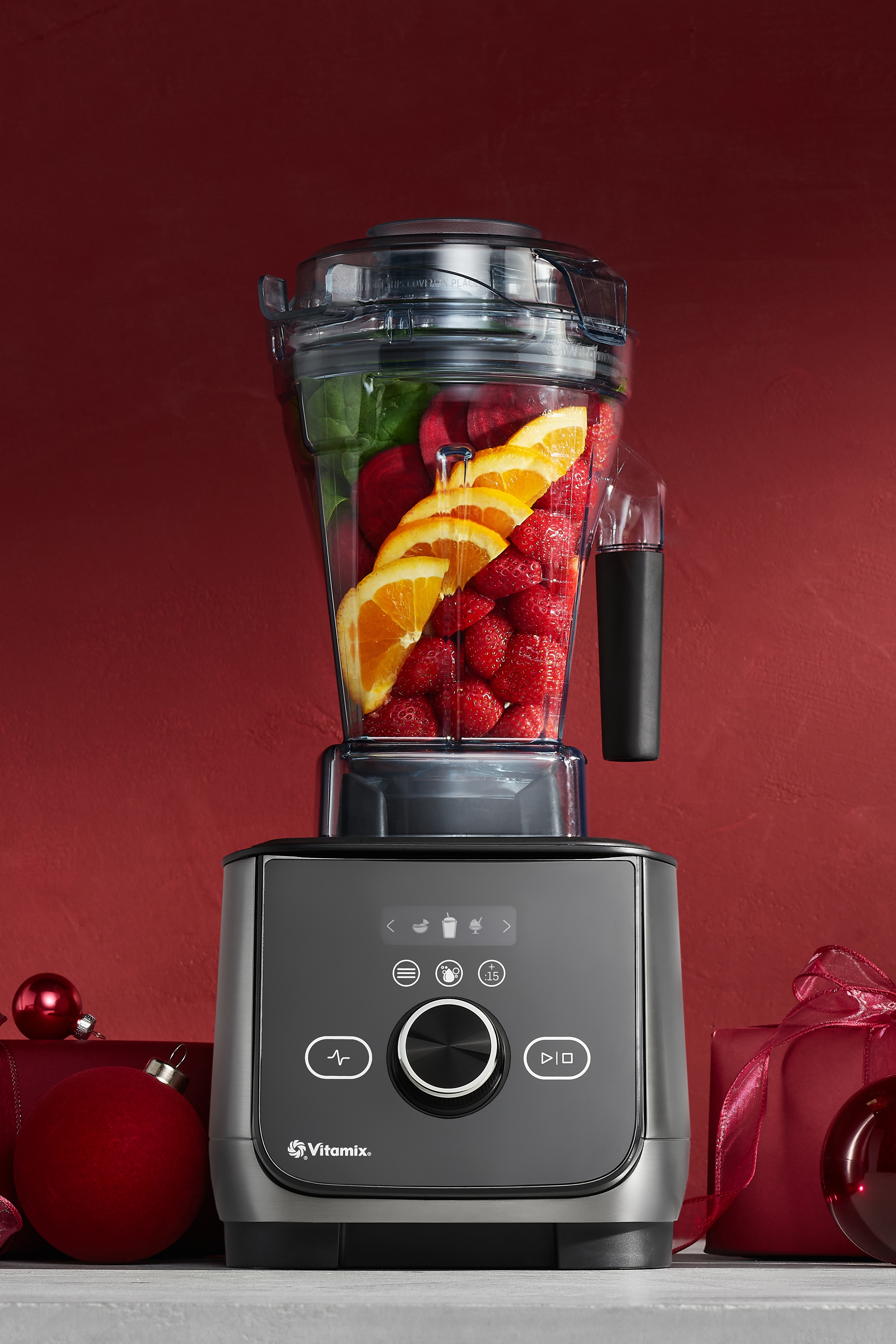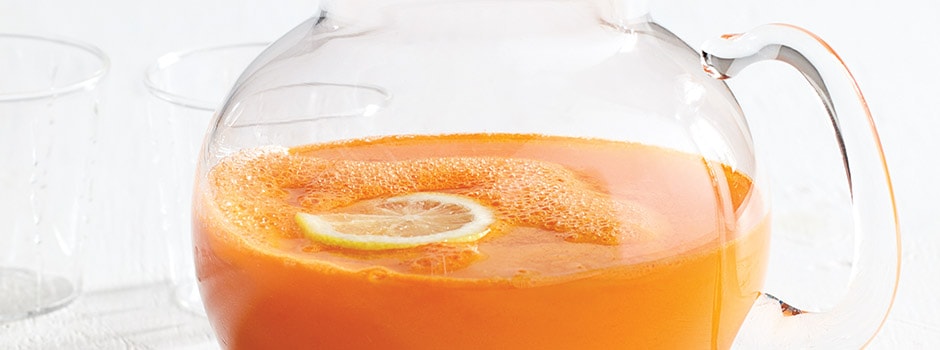Whether you're looking to refuel after your a workout, or just need a quick and healthy meal you can enjoy on the run, blending and juicing let you pack several servings of fruits and veggies into one glass. Your powerful Vitamix machine makes it easy to do both, but blending is the quicker, healthier and more eco-friendly option. If you're not sure about the merits of juicing vs. blending, here's everything you need to know.
What's the Difference?
Your Vitamix machine can blend as well as perform whole-food juicing easily, but if you're really in a time crunch, blending is an easier and cleaner option.
For blending, add your smoothie ingredients — roughly chopped is fine — to your Vitamix machine. Turn it on and gradually work up to the highest speed, blending until the drink takes on a smooth, creamy texture. Play around with adding more liquid for a thinner smoothie, or more fruit for a thicker smoothie, until you get the right consistency.
Juicing starts the same way but requires some additional time and makes a little extra mess. After you've blended your juicing ingredients using the directions above, run the mixture through a filtration bag, cheesecloth or mesh strainer to separate the juice from the pulp. Squeeze the bag gently to extract as much juice as possible. If choosing to juice, try a refreshing Apple Juice, or sip on a medley of flavors in the Carrot Juice Plus. To maintain the highest nutritional value, leave the juice unstrained.
Blend for More Fiber
While juice is still a source of vitamins and minerals, straining out the pulp removes most or all of the dietary fiber, leaving it with a major nutritional disadvantage. Most people need more fiber in their diet. The average American downs only 14 grams of fiber per day, which is just over half the daily need for women and one-third of what men require.
Choosing fiber-free juice over fiber-filled smoothies also means your beverage won't be as satisfying as it could be. Fiber naturally regulates your blood sugar levels and absorbs water in your digestive tract, which means you feel fuller longer. If you opt for juice over a smoothie, the lack of fiber combined with the blood sugar spike might leave you ravenous in an hour or two.
Fiber is essential for long-term health, too. It absorbs cholesterol in your digestive tract and flushes it out of your body, which is helpful for reducing risk factors for heart disease. Meals high in fiber also keep your digestive system moving, preventing constipation.
Blend to Reduce Food Waste
Fruits and veggies are the most wasted food, according to an Environmental Protection Agency report, accounting for almost half of the total food waste in America in 2010.
Opting to blend ensures you keep all the goodness of the produce in your smoothie, virtually eliminating waste. When you juice, you increase food waste as you end up throwing out the pulp. And because you can't separate all the juice from the pulp, you're also wasting some fresh, nutrient-rich juice.
Related Articles

How to Make Homemade Juice in a Blender
Learn how to make homemade juice in your Vitamix with the tips and blender juice recipes.

13 Whole Food Juice Recipes
The Vitamix machine utilizes every part of your produce and its valuable nutrition.

6 Tips for a Healthy Juice Cleanse
Learn why certain foods are commonly used in juice cleanses.



